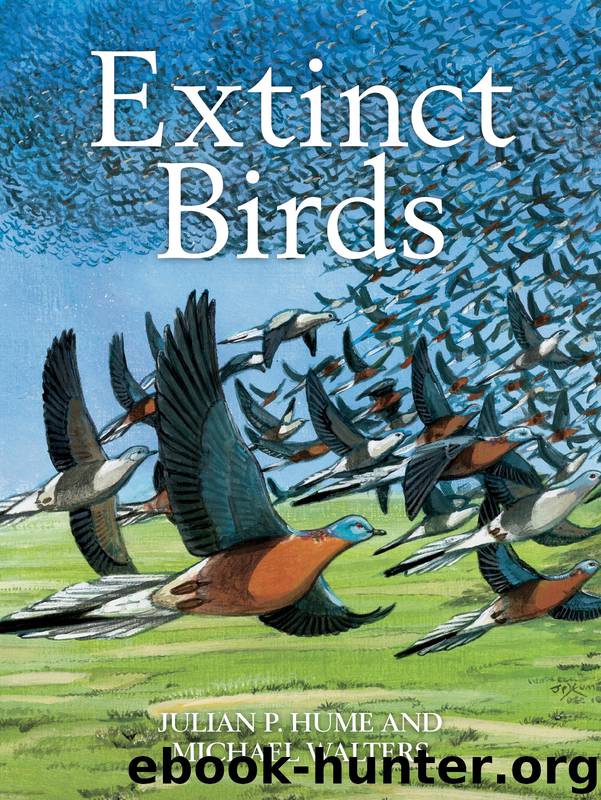Extinct Birds by Julian P. Hume & Michael Walters

Author:Julian P. Hume & Michael Walters [Hume, Julian P. & Walters, Michael]
Language: eng
Format: epub
Publisher: Bloomsbury Publishing PLC
Published: 2012-04-25T23:00:00+00:00
Martinique House Wren Troglodytes aedon martinicensis
(Sclater)
Thryothorus martinicensis Sclater 1866, p. 321 (Martinique)
Specimens Specimens are in Cambridge, Massachusetts; Chicago; New York; and Tring.
Status Probably extinct, the last specimen being taken in 1886.
Range Martinique, West Indies.
Description 11–13cm (4.25–5in). The West Indian island races were all fairly similar in appearance, greyish or tawny brown above, white or pale cinnamon below. The Martinique race was larger than T. a. guadeloupensis of Guadeloupe, but with smaller tail; duller in colour; flanks pale cinnamon; and undertail-coverts barred black and tipped white.
When this race was described in 1866 the birds were said to be common, but by 1878 Ober (in Lawrence 1878c) found that the birds were scarce on Martinique:
An inhabitant of the woods; I have not seen it near houses or sugar mills, only in the forests of the hills, and along the borders of streams where the bushes are thick.
Nothing more than this is known of the wren’s habits.
Five other subspecies of House Wren occur in the West Indies. The St. Vincent T. a. musicus and St. Lucia Wren T. a. mesoleucus Wrens are rare; the Guadeloupe House Wren T. a. guadeloupensis was thought extinct but was rediscovered in 1969 (Kroodsma & Brewer 2005); the form on Dominica, T. a. rufescens, is common, and that on Grenada, T. a. grenadensis, relatively so. The extinction of the Martinique race is all the more puzzling as each of these islands seems to have been subjected to the same pressures of human population and introduced predators. On St. Lucia, the range of the predatory native boa Constrictor orophias coincides with that of the wren and other ground-nesting birds, and apparently controls introduced mongooses (Greenway 1967). But the snake does not occur on Grenada, where the wren is still common. This interesting ecological relationship awaits further analysis.
Download
This site does not store any files on its server. We only index and link to content provided by other sites. Please contact the content providers to delete copyright contents if any and email us, we'll remove relevant links or contents immediately.
The Lonely City by Olivia Laing(4751)
Animal Frequency by Melissa Alvarez(4395)
All Creatures Great and Small by James Herriot(4233)
Walking by Henry David Thoreau(3895)
Exit West by Mohsin Hamid(3778)
Origin Story: A Big History of Everything by David Christian(3650)
COSMOS by Carl Sagan(3559)
How to Read Water: Clues and Patterns from Puddles to the Sea (Natural Navigation) by Tristan Gooley(3409)
Hedgerow by John Wright(3277)
The Inner Life of Animals by Peter Wohlleben(3261)
How to Read Nature by Tristan Gooley(3250)
How to Do Nothing by Jenny Odell(3235)
Project Animal Farm: An Accidental Journey into the Secret World of Farming and the Truth About Our Food by Sonia Faruqi(3178)
Origin Story by David Christian(3148)
Water by Ian Miller(3129)
A Forest Journey by John Perlin(3027)
The Plant Messiah by Carlos Magdalena(2883)
A Wilder Time by William E. Glassley(2818)
Forests: A Very Short Introduction by Jaboury Ghazoul(2790)
